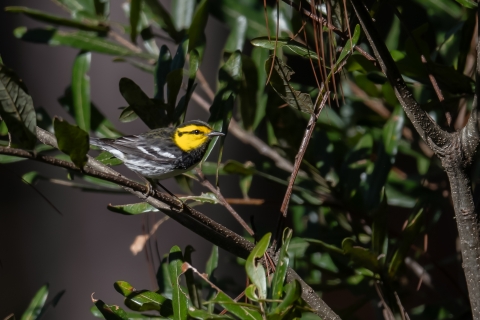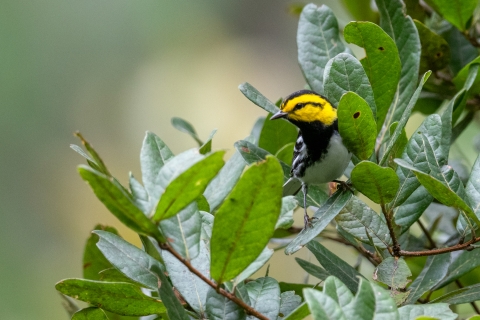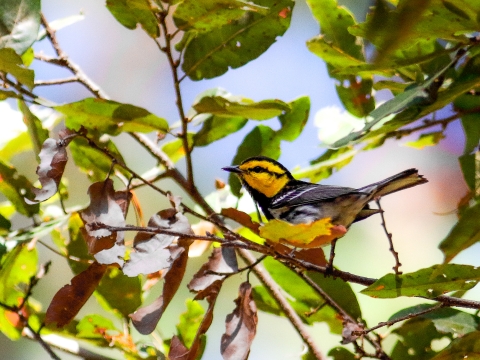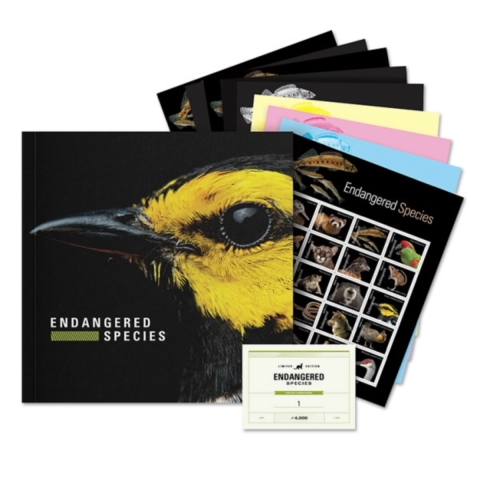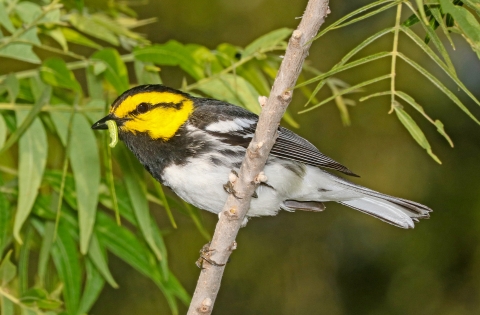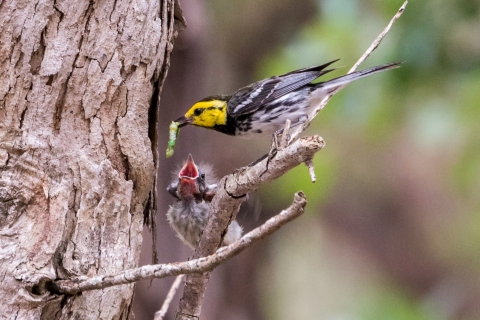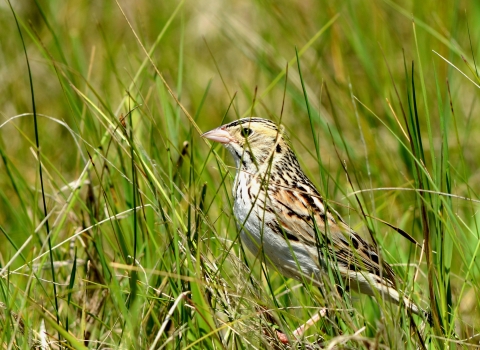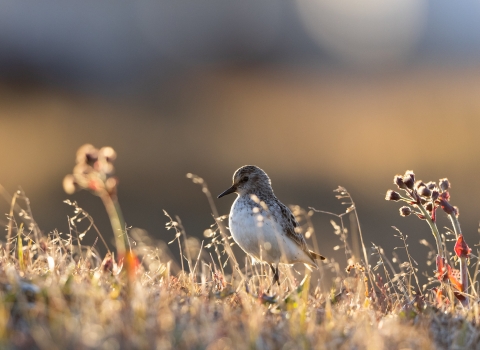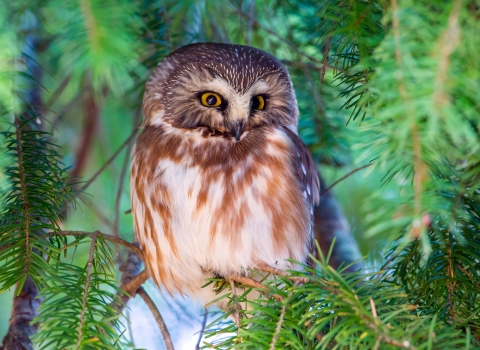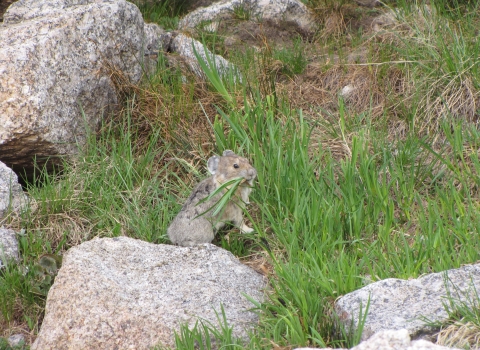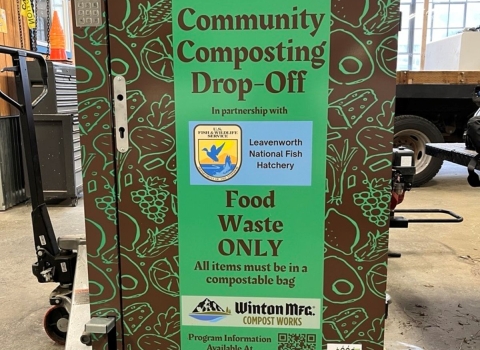As dawn breaks, the distinct melody of an endangered golden-cheeked warbler echoes across the juniper-oak woodlands of Central Texas. With its striking black and white plumage accented by vibrant yellow cheeks, their arrival signals the emergence of spring, but also the resilience and hope embedded in conservation efforts spanning the Americas. A true Texan, it has just returned from spending winter in the lush pine-oak forests of Central America, back to where all golden-cheeked warblers are born. Here, they are the only bird species to exclusively breed in the state, where they will build their nest using bark of the old growth Ashe juniper trees. For the next few months, they will remain high up in the tall, mature woods, feeding almost entirely on insects amongst the deciduous trees as they raise the next generation of golden-cheeked warblers. By late summer, they will migrate south again. Despite being small and mostly out of sight, these endangered warblers are large in impact - inspiring continental commitments from Central Texas to Central America and beyond.
A Golden Thread
It was 1990 when the golden-cheeked warbler was listed as endangered under the Endangered Species Act (ESA) due to threats of habitat loss, degradation and fragmentation. Habitat impacts like these can quickly lead to population declines and, in some cases, extinction. Conservation leaders recognized the need to act fast, and started looking for ways to optimize resources from both national and international partners to protect the species and its habitat across its entire migratory range.
Shortly after the species was listed, the Balcones Canyonlands National Wildlife Refuge (the Refuge) was established specifically to protect the nesting grounds of golden-cheeked warbler and (the since recovered) black-capped vireo on the eastern edge of Texas Hill Country. The Refuge is home to over 245 bird species throughout the year, nearly half of which are neotropical migrants — birds who breed in the U.S. and Canada, but spend the winter farther south. Conserving this area helps ensure golden-cheeked warblers will have a place to nest and breed when they return each spring. Biologists have had the opportunity to study the species, monitor the population, and map habitat to increase our understanding of their needs and challenges within their limited breeding range. However, in order to keep the endangered golden-cheeked warbler from going extinct, we must also protect the species non-breeding grounds in the pine-oak forests of Central America.
Recognizing the need to protect migratory birds like the golden-cheeked warbler across their range, Congress passed the Neotropical Migratory Bird Conservation Act (NMBCA) to sustain healthy bird populations by fostering international cooperation and providing financial resources and support for conservation projects. Since 2002, the NMBCA grant program has benefited the golden-cheeked warbler through an investment of over $8.7 million dollars, matched by over $31 million in partner contributions that have funded 58 projects across 6 countries. These projects have helped to protect, restore, enhance and manage more than 970,000 acres of critical golden-cheeked warbler habitat across their wintering range in Central America.
Among the most significant successes of the NMBCA is its influence on the formation of conservation networks like the Alliance for Conservation of Mesoamerican Pine-Oak Forests (the Alliance). This international cooperation works from Mexico down to Nicaragua to conserve important non-breeding habitat for the endangered golden-cheeked warbler. The Alliance, which recently celebrated the 20th anniversary since its establishment, now consists of 14 member organizations unified in conserving one of the most biodiverse ecoregions in the world!
Implementing the Golden-cheeked Warbler Conservation Plan
When the time comes to migrate south from Texas, all golden-cheeked warblers will fly through Mexico, where they either stay or pass through on their journey further south. Within this range lies a biodiversity hotspot known as San Cristobal de Las Casas in Chiapas, where Pronatura Sur, A.C., has been working on NMBCA-funded projects to implement the Alliances’ Conservation Plan for the Central American Pine-Oak Forest Ecoregion and the Golden-cheeked Warbler (2017-2027). Project Officer Claudia Macías and her colleagues Luz Rodríguez and Eric Hernández provided us with insights on their experiences working in the field.
“In the 1990s when ornithologists from Mexico, Guatemala, Honduras, Nicaragua, and El Salvador began to share the few records we had of the golden-cheeked warbler in our countries during the winter, we were excited to have a shared species in the mixed oak-pine forests where we all lived and worked” they shared. Ultimately, Pronatura was inspired to conserve the biodiversity in this unique region through the implementation of conservation actions for the golden-cheeked warbler, which was then seen as an “umbrella species” within the community. As part of their projects, the team began promoting the concepts of "High Conservation Values" and "Good Forest Management Practices" as guidelines that have since been effective in “making forest management more sustainable” in Chiapas by “highlighting not only the commercial value of forests but also the value of the ecosystem services they provide; the importance of forests as a 'habitat' for biodiversity; deepening the knowledge, threats and functions of biodiversity; and, highlighting the pride and responsibility of forest owners to produce by conserving.”
Beyond earning the adoption of these approaches throughout the state of Chiapas, Claudia and her team have also been able to use NMBCA grant support to conduct research contributing to the overall understanding of the species, as well as to establish mechanisms to protect pine-oak forests that are confirmed golden-cheeked warbler habitat and to further protect, restore and enhance these habitats with the local communities support. They continue to build an appreciation for the socio-ecological value of the forests and its inhabitants in a way that inspires recovery, protection and sustainable management in the long-term. Ultimately, projects of the Alliance with the NMBCA have shown them that “when forest owners participate as monitors and guardians of the forests, it helps them to learn more about the diversity of resident and migratory birds, and they are trained to be local birding guides under ethical principles of care for the environment and the birds themselves.”
Saving the Golden-cheeked Warbler Wintering Habitat from Guatemala to Nicaragua
Meanwhile, the Alliance’s Fundación Defensores de la Naturaleza (FDN) (English translation: Defenders of Nature Foundation) has been working to conserve critical habitat for those golden-cheeked warblers who continue their migratory journeys past Chiapas further down to Guatemala, Honduras and Nicaragua. According to the Alliance, Guatemala has 59% of the potential golden-cheeked warbler non-breeding habitat, more than any other country in Central America. The FDN’s NMBCA-funded project “Saving the Golden-cheeked Warbler Wintering Habitat” has played a significant role in strengthening conservation actions for golden-cheeked warbler in one of the most important areas of this ecoregion: the Sierra de las Minas Biosphere Reserve.
We heard from Project Officer, Raquel Leonardo, who told us, “these projects are extremely important because they contribute to addressing one of the main threats in the Sierra de las Minas Biosphere Reserve: forest fires.” The team at FDN aims to restore the pine-oak forests to provide the necessary resting and foraging habitat to support the species migration journey. One major aspect of their project is connecting with local communities and governments to take a more proactive fire management approach for fire prevention. As part of this, they work with experts in the field on a series of Fire Management Webinars that “undoubtedly had a very positive impact for the partners of the Alliance and for other stakeholders that carry out conservation actions throughout the ecoregion.” Importantly, “the cloud forests in the Sierra de las Minas Biosphere Reserve are also favored by the fire prevention and control measures implemented in the projects due to their continuity, together both ecosystems harbor a high number and diversity of species,” she said.
Local communities in Guatemala and Honduras also established nurseries where they participate directly in restoration actions through growing native plants to be planted in the area. Many local people also contribute their land to restore degraded areas and help carry out restoration in the Reforesting Sierra de las Minas program. In Nicaragua, the local Chorotega community of Mozonte has been managing around 57,000 acres of habitat in the Dipilto-Jalapa Natural Reserve. The people of Mozonte have used a sustainable, participatory community forest management approach to restore the area with native plants, improve water governance, and promote best practices in livestock areas.
According to Raquel, “NMBCA grants have been key to the conservation efforts as they are specifically aimed at the conservation of pine-oak forests, which are commonly under a lot of pressure as they provide raw material and other goods to a large part of the population that depends on them for survival.” Over the years, community brigades have formed to help , reduce the risk of their land or nearby forest areas from being burned by fires and prevent the disappearance of resources they use to maintain their livelihoods.
“It is gratifying to know that the small actions we take in coordination with other stakeholders along the migratory route are having an impact on a global level... I believe that partnerships are essential for the conservation of biological diversity, only by working with other organizations, institutions or decision makers can we have a positive impact on the conservation of migratory birds and their habitat,” Raquel reflects.
Restoration of Pine-oak Ecosystem for Golden-Cheeked Warblers in Honduras
Towards the southern portion of the golden-cheeked warblers' migratory range is Honduras, home of the largest territory that corresponds to the pine-oak ecosystem. Here, the Mesa de Organizaciones Comanejadoras de Áreas Protegidas de Honduras (MOCAPH), which translates to Association of Co-Managing Organizations of Protected Areas of Honduras, also operates in coordination with the Alliance. We spoke with Project Officer Candy Alvarado about their NMBCA-funded project, "Restoration of Pine-oak Ecosystem for Golden-Cheeked Warblers." The pine-oak trees of Honduras have been highly affected by the pine bark beetle, leaving the forests exposed to fires and remaining trees susceptible to disease. In response, their project focuses on ecosystem restoration and engaging local communities in restoration efforts through networks that maintain close communication with grassroots organizations. Their goal is to support the recovery of the affected areas and keep the remaining forests standing for the benefit of the golden-cheeked warblers as well as overall biodiversity in the area.
In addition to their many successes in restoring this critical habitat, they have also used outreach and environmental education to spread awareness and foster cooperation throughout the community. Candy tells us they “now have schools and young people interested in learning about the ecology of the ecosystem and the species of fauna that inhabit it” which has inspired them to innovate and expand on other initiatives like the implementation of citizen science projects, teaching high conservation values, and fire protection measures similar to those implemented in Guatemala.
“The conservation models in Honduras are based on a variety of participatory strategies that encourage a sense of belonging and empathy for the territories in which they live" Candy tells us. In this spirit, she hopes that the future of bird conservation will involve “creating a society closer to the natural environment, where the importance of birds in the cycle of the evolution of ecosystems is remembered... we must give birds the role and relevance they deserve.”
Celebrating Milestones and Looking Ahead
In 2023, the golden-cheeked warbler graced the cover of the Endangered Species book as one of 20 endangered species featured in a series of stamps to commemorate the 50th anniversary of the ESA. While the ESA has been one of our most successful laws in reversing the decline of wildlife in the United States, it is migratory species like the endangered golden-cheeked warbler whose lives transcend borders and remind us of the importance in working with international partners to achieve our shared conservation goals. In 2025, we will celebrate another milestone in the 25th anniversary of the NMBCA, a similarly historic law that has made it possible for us to work with hundreds of international partners for conservation that has spanned continents.
Thank you to our many dedicated partners working to protect neotropical migratory birds across the hemisphere!
Neotropical Migratory Bird Conservation Act (NMBCA)
Since 2002, the NMBCA has provided more than $94.2 million in grants to support 747 projects in 43 countries. These projects have positively affected more than 6 million acres of bird habitat and spurred partnerships on multiple levels contributing an additional $363 million.
The golden-cheeked warbler is among the 13 original NMBCA IMPACT Program species. The IMPACT program, which is currently on pause for evaluation to determine its future direction, used a portion of NMBCA funding to support conservation and research projects that investigate migratory connectivity or population limiting factors for key species with the goal of achieving measurable biological improvements in these species over a 5-10 year period.
World Migratory Bird Day in 2024 focused on the importance of insects for migratory birds. The presence of insects greatly influences the timing, duration, and overall success of most bird migrations. For some bird species, insects are their main food source, or are the food they need to feed their young. Many insect species provide essential nutrients for birds and are critical for their survival. However, an alarming decline in insect populations across the world is having serious implications for migratory birds. Insectivore species, like the golden-cheeked warbler, are especially vulnerable. Aerial insectivores, bird species that primarily eat insects they catch in flight, have shown the highest percentage of species decline of any bird group. Actions taken to reduce insect declines, such as by planting native and restoring grasslands and forests, can help bring back birds and insects across their flyways. Find out how you can join the global effort to “Protect Insects, Protect Birds!"

